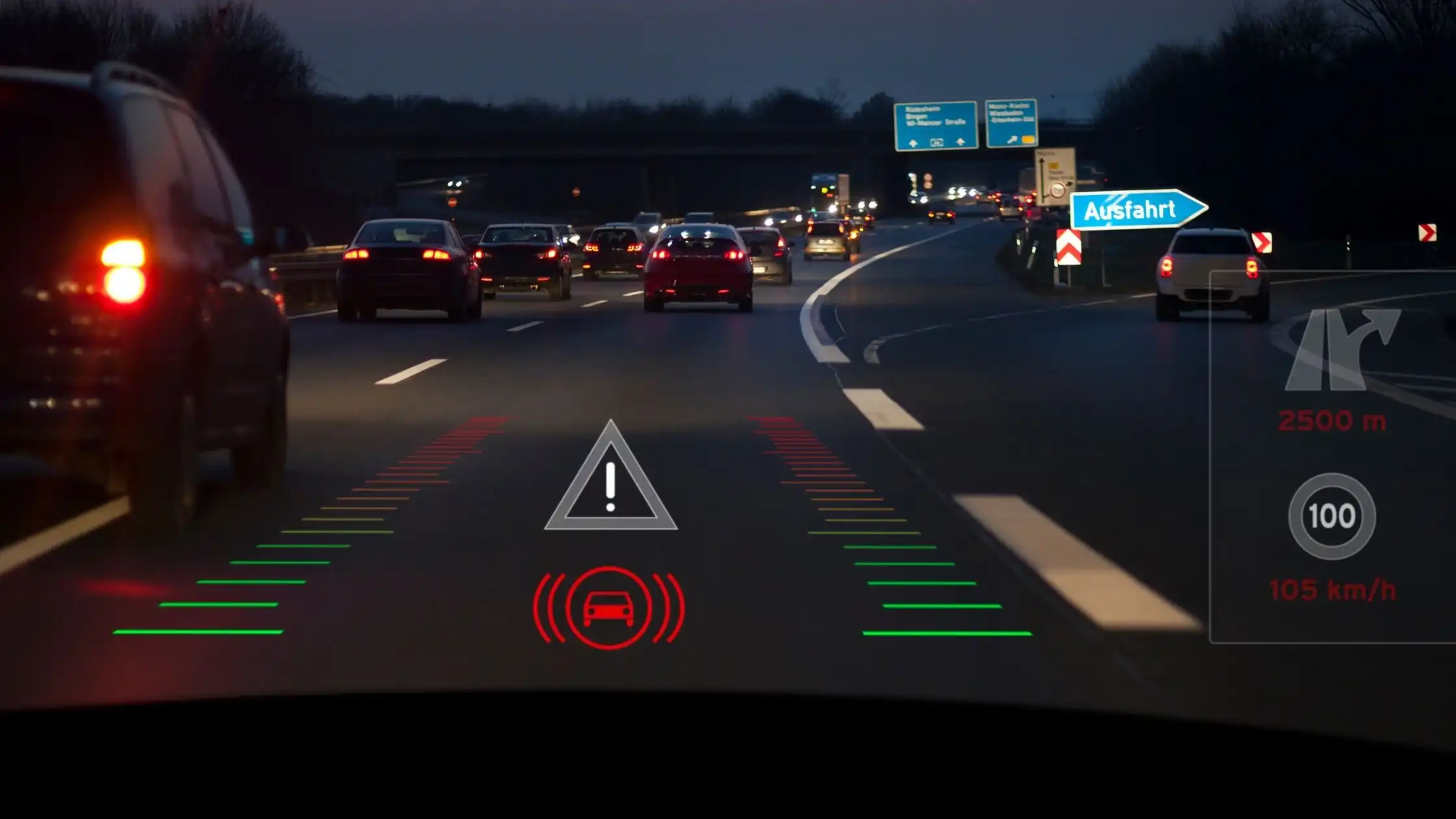Everything You Need to Know About AR HUD Displays
Augmented reality displays also known as ar hud displays are transforming how we interact with our surroundings by projecting essential information, like directions, directly onto the windshield while driving. This technology enhances navigation and offers immersive experiences, such as gaming. As AR HUDs continue to evolve, they open up possibilities across various industries. This summary explores the uniqueness of AR HUDs, their functionality, and their potential applications beyond automotive use.
The Evolution of HUD Technology
Heads-up displays (HUDs) have significantly evolved since their introduction in the 1950s for military aviation, where they projected critical flight information onto pilots’ visors to enhance situational awareness. The technology progressed into commercial aviation and eventually into the automotive industry, where early HUDs provided basic information like speed and navigation signals.
Advancements in digital displays and sensors have led to modern AR HUDs that overlay complex graphics onto real-world environments, integrating GPS data, vehicle diagnostics, and augmented reality elements for context-sensitive information. Today’s HUDs prioritize user-centric design, delivering essential information while minimizing distractions, marking a significant leap in functionality and visual engagement for drivers.
How AR HUD Displays Work
AR HUD displays leverage advanced optics and digital technology to overlay information directly in a user’s field of view, allowing critical data to be seen without diverting attention from the task at hand. A transparent display projects images into the environment, making them appear as if they are floating in real space, thereby enhancing situational awareness.
Sophisticated sensors track head movement, adjusting the visual output to keep relevant details. Many AR HUDs also feature voice recognition and gesture controls for hands-free interaction, reducing distractions and providing an intuitive user experience. As connectivity improves, these systems can pull real-time data from sources like GPS and vehicle diagnostics, making them valuable tools across various industries.
Features and Benefits of AR HUD Displays
AR HUD (Augmented Reality Head-Up Display) systems offer several key features and benefits that make them a powerful tool across different applications, from automotive to training and entertainment. Here’s a breakdown:
Features of AR HUD Displays
AR HUD displays offer several key features:
- Field of View Projection: Overlays essential information within the user’s line of sight, enhancing focus and situational awareness, such as navigation prompts for drivers.
- Real-Time Data Integration: Provides continuous updates on navigation, speed, weather, and more, crucial for safety and efficiency in high-stakes environments like driving and aviation.
- Customization: Allows users to personalize displayed information, improving user experience and productivity by prioritizing relevant data for specific tasks.
- Immersive Experience: Creates engaging scenarios for training, gaming, and education, enhancing skill retention and acquisition.
These features make AR HUD displays powerful tools for improving interactions across various industries, contributing to greater safety, efficiency, and engagement.
Benefits of AR HUD Displays
- Enhanced Safety: AR HUDs project critical information into the user’s view, minimizing distractions and enhancing focus on their surroundings.
- Increased Efficiency: Consolidates information from multiple devices into one central display, saving time and streamlining workflows.
- Engaging and Interactive: AR HUDs enhance training and gaming by making learning immersive and entertaining, which boosts retention and engagement.
- Adaptability Across Industries: From automotive to healthcare, AR HUDs are versatile, offering applications in real-time monitoring, navigation, entertainment, and beyond.
AR HUD displays enhance focus, increase safety, and streamline operations, making them a cutting-edge choice for a wide range of use cases.
Potential Applications Beyond the Windshield
1. Automotive Industry
AR HUD displays enhance driving by projecting critical information like navigation prompts, speed, and collision warnings directly onto the windshield, allowing drivers to stay focused on the road. Luxury brands are already integrating this tech, making AR HUDs a staple for advanced in-car experiences. The tech promises further innovations to boost driver safety and situational awareness.
2. Aviation Industry
In aviation, AR HUDs improve pilot situational awareness by displaying real-time flight data, such as altitude and speed, directly onto the cockpit view. This reduces distractions, aiding pilots, especially in challenging conditions like turbulent weather. The technology also benefits pilot training programs, offering simulations that help trainees learn in a controlled environment.
3. Gaming and Entertainment
AR HUD displays enhance gaming by seamlessly blending digital elements with real-world surroundings, allowing players to interact with virtual environments and enriching storytelling. They also improve engagement at concerts and sports events by providing fans with real-time stats and exclusive content through AR overlays.
4. Healthcare and Medical Training
In healthcare, AR HUDs enable surgeons to access patient data, including vital signs and 3D models, within their line of sight, reducing errors and enhancing efficiency. Medical training is transformed as students receive real-time feedback in simulated environments, promoting interactive learning. AR also aids collaboration, allowing multiple team members to view shared data without physical screens.
Challenges and Limitations of AR HUD Displays
Here’s a refined overview of the challenges and limitations of AR HUD (Augmented Reality Head-Up Display) technology:
- Technology Maturity: Many AR HUD systems are still in developmental stages, limiting their practical applications. This lack of maturity can hinder widespread adoption and reliability in critical environments like aviation and automotive.
- Cost of Implementation: A high-quality AR HUD requires advanced hardware and software, which can be costly to both manufacturers and consumers.
- User Distraction: The potential for cognitive overload is a major concern. Excessive information displayed can distract drivers and pilots, undermining safety instead of enhancing it. Balancing useful data with user attention is critical.
- Environmental Factors: Visibility can be compromised by bright sunlight or adverse weather conditions, affecting the effectiveness of AR HUDs. Ensuring functionality in various environments is a significant challenge for developers.
- Regulatory Hurdles: Compliance with strict aviation and automotive standards can delay the adoption of AR HUD technologies. Developers must navigate complex regulatory landscapes, which can slow down innovation and deployment.
The solutions to these challenges will facilitate the development and implementation of AR HUD displays, maximizing their benefits for user experience and safety.
Future Outlook for AR HUD Displays
The future of AR HUD displays is filled with exciting possibilities as technology continues to evolve. Key advancements include:
- Enhanced Clarity: Improvements in optics and display resolution will provide users with a clearer and more immersive experience, facilitating a seamless integration of digital information with the real world.
- AI Integration: The incorporation of artificial intelligence could personalize user experiences. For instance, vehicles may adjust navigation based on individual preferences or emotional states, creating a more tailored interaction.
- Industry Collaboration: As various industries explore new applications, partnerships between technology firms and manufacturers may result in innovative designs that cater to specific needs, enhancing functionality and efficiency.
- Safety Enhancements: Future AR HUDs are expected to evolve safety features, significantly improving driver awareness while minimizing distractions, which is crucial for both automotive and aviation applications.
- Increased Investment: Growing consumer demand will likely spur investment in research and development, fostering further advancements in AR HUD functionality and usability across multiple sectors.
The future for AR HUD displays is promising, with the potential to transform how we interact with our environments and technology.
Conclusion: Is AR HUD Display the Future?
AR HUD displays hold vast potential to transform interactions across various sectors, including automotive, aviation, gaming, and healthcare. They can enhance driver safety, provide pilots with real-time data, and revolutionize gaming experiences while allowing healthcare professionals to access critical information without losing focus on patients.
Despite these opportunities, challenges such as visibility in different lighting conditions and integration with existing systems need to be addressed. However, as investments in AR technology increase and research progresses, the future of AR HUD displays appears promising. The landscape is evolving, raising questions about whether these displays will become commonplace and how they will overcome existing challenges to create a more interactive world.







